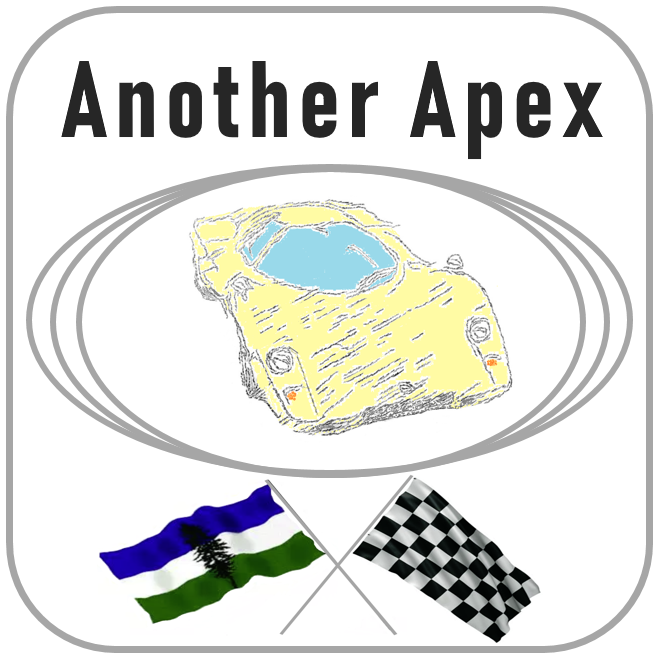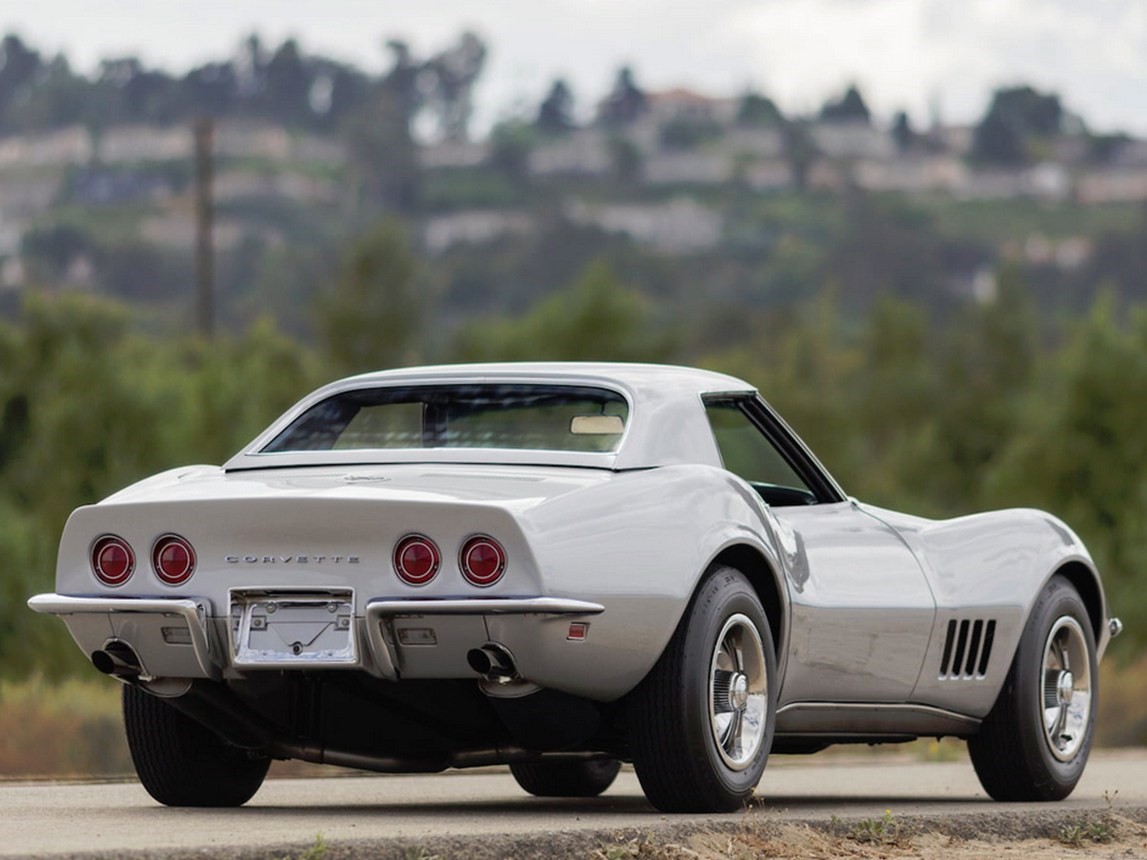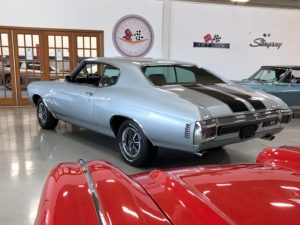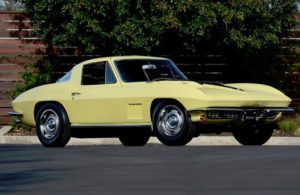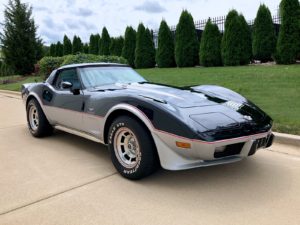Could base C8 power rival the racing engines of yesterday and today?
Muscle car enthusiasts still reminisce about the sixties when Detroit’s rivalries introduced larger and more powerful engines year after year. Corvette reached its pinnacle in the late sixties. Fatefully, the seventies would see progressively restrictive regulation of emissions, noise, and fuel consumption sending horsepower trends into temporary regression.



Pic 1: 1956 265 cubic inch small-block V8 rated at 225 gross horsepower
Pic 2: 1963 L84 327 cubic inch fuel injected small-block V8 rated at 360 gross horsepower
Pic 3: 1965 L78 396 cubic inch big-block V8 rated at 425 gross horsepower
Pictures courtesy of Corvette Mike in Anaheim California https://corvettemike.com
“Temporary,” means it took two decades and the resurrection of fuel injection before Corvette’s base engine (blue in the chart below) comfortably exceeded 200 net horsepower again. And if skipping over one generation was wasn’t bad enough, the wait was twice as long for customers seeking to rival the thundering power of the strongest sixties big blocks (red in chart below) with a new Corvette.
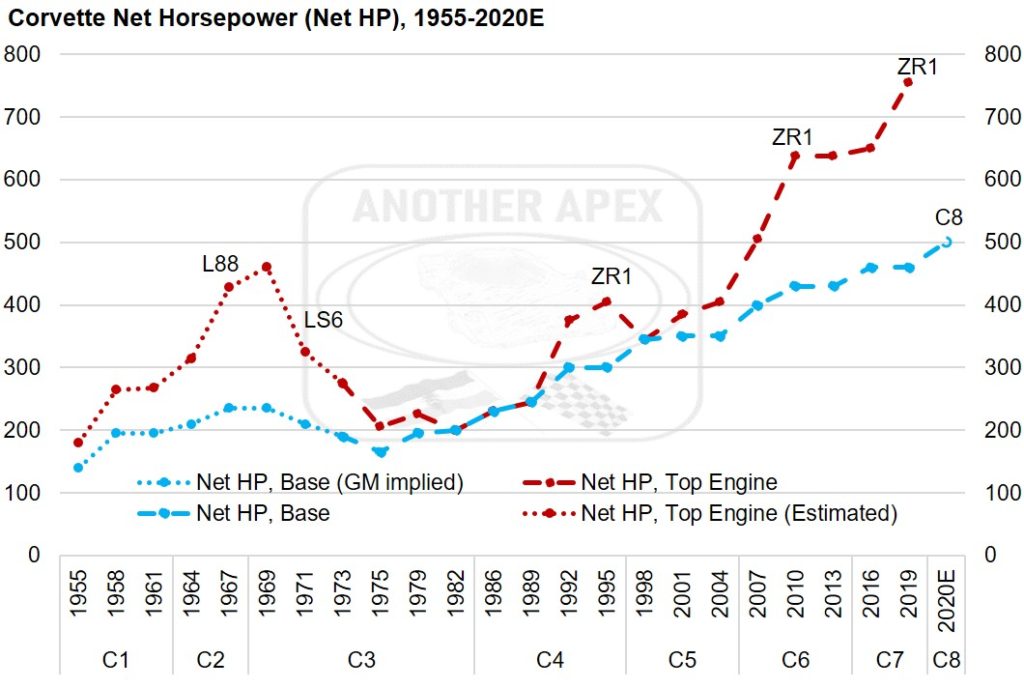
Prior to 1972 model year, reported horsepower was “gross” (i.e. engine dyno-ed without intake or exhaust filtration/obstruction); GM’s published hp ratings of 430 hp disregarded for 1967 L88 and 1969
From Corvette Museum Archives, GM, Noland Adams, AnotherApex estimates, www.hotrod.com/articles/ccrp-0910-chevy-l88-427-engine/ -and- www.motortrend.com/news/feature-flashback-og-supervette-when-c3-chevrolet-corvette-zl-1/ both accessed 6/17/2019
Those few specially assembled aluminum headed Chevrolet engines from the late sixties frequently published underrated power levels. As a result, on paper the motorsport focused engines – like the L88 – weren’t even listed as the most potent “power team.” Adjusting the factory’s claims to more accurate horsepower figures illustrates not only how dramatically regulation impacted these “off road application” engine’s performance, but also how daunting it then became to rival their virility.

A 1968 L88 Corv ette V8; the 427 cubic inch V8 was rated at 430 gross horsepower but capable of over 500 gross horsepower in reality. Pic courtesy of Corvette Mike in Anaheim, CA where this car was sold https://corvettemike.com/used-corvettes-for-sale/1968-silverstone-silver-corvette-l88-convertible/
Like striding through sand dunes, every year’s technologic advances incorporated some regress to meet the next notch in government regulation. As a result, it took a nearly biblical 40 years for Corvette factory engine development to again flirt with 500 net horsepower. But once achieved, that goal was quickly supercharged to the 650-750 horsepower now expected of Z Corvettes.
Indeed, the forced induction of the C7 ZR1 and Z06s has taken Corvette’s power beyond their athletic GTLM racer siblings. Perhaps in the first year of C8 production, thousands of entry level buyers will plop down in a new base Vette that churns out 500 horsepower, therefore matching the power of its endurance racing brethren from today and yesterday. However today Chevrolet can trumpet this street and track capability, emphasizing the synergies competition has brought to the new C8R race car.
What a different world today is than when Zora Arkus Duntov and his scrappy team devoted themselves to achieving similar performance. Performance that would not be advertised and see only limited production. The privateer race teams of sixties – still suffering through a ban on factory supported racing – often ignited their new solid lifter big blocks with both confidence and uncertainty. Although they had good reason to expect one of the most potent engines at the track, often enough they’d also be testing new equipment for Chevrolet during the race.[1]
In appreciation of the nearly ‘released’ eight generation Corvette, over the next few weeks we’ll take a ride on this nostalgic roller-coaster of power. From the inception of the iron small-block in 1955 to the fuel binging capabilities of modern forced induction Corvettes. If this interests you, please request notification of new posts from anotherapex.com.
Written by Jez Stephens
[1] C2 Corvette Race Cars – Corvette Royale, Tom Shaw, Super Chevy, 9-1-2009 http://www.superchevy.com/features/corp-0710-c2-corvette-race-cars accessed 7/11/2019

